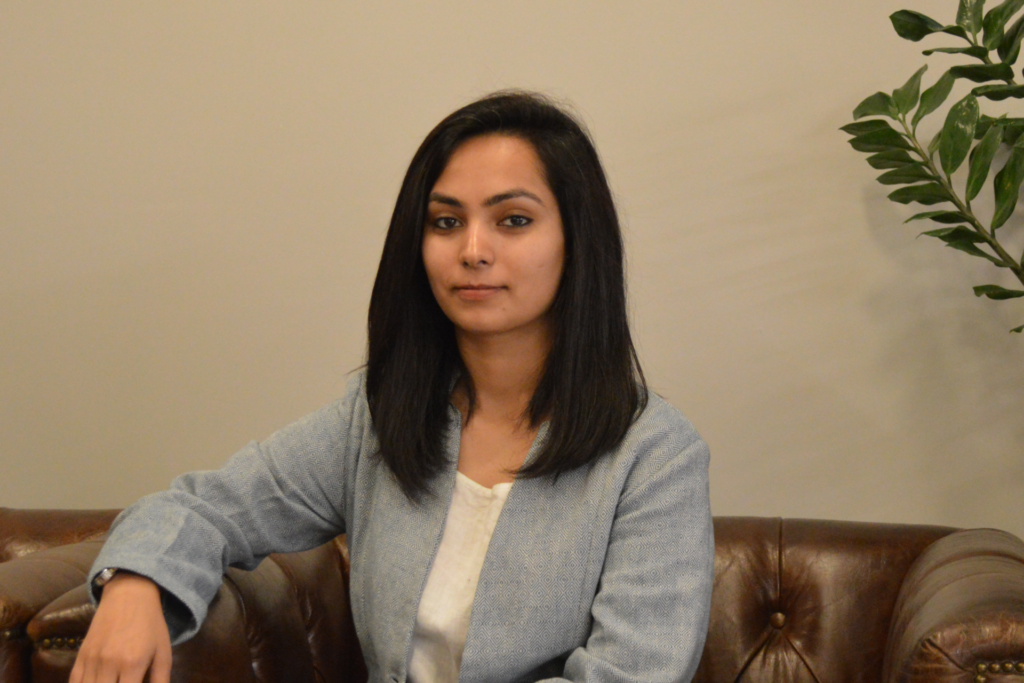Weaving Success: How an Apparel Maker revived Indian Heritage

A small business owner can not only think big, but also win big. Look no further than Vatsala Chopra, a second generation entrepreneur, for proof. Vatsala is the Founder of Veave’s Studio, a textile brand based out of Banaras dealing with traditionally woven and embroidered, sustainable textile products. Veave’s Studio promotes the true essence of Indian heritage and thereby strives to empower the weaver community. HerMoneyTalks caught up with Vatsala to find out how she spun a success story out of thin yarn.
Currently focusing on the domestic market, Vatsala has been instrumental in steering the brand up the growth ladder. As Chief Believer at Veave’s Studio and having nurtured personal relationships with weavers, she has garnered immense industry knowledge.
Her experience in business operations helped streamline the brand’s supply chain as the brand enjoyed international success.
Threading together a vision
Prior to her entrepreneurial stint, Vatsala worked in the film industry as Assistant Director under Zoya Akhtar in the movie 'Dil Dhadakne Do'. “I had planned everything in a very systematic manner. I worked with my dad in exports and had a vision to expand it further into domestic market,” states Vatsala proudly. She saved the profits that they made in exports and invested it in starting her venture. A small business owner was thus born.
I saw the weaving art skip a generation and to me that was beautiful. I felt pretty proud of what we were doing with this, reassuring the idea behind Veave’s Studio.
Vatsala wanted to create a platform for Indian weavers to showcase their rich heritage. Her passion to help traditional artisans of India brought her back home to Banaras. Most of the weavers were old and had many years of experience in weaving. Their sons were mostly farmers or involved in other practices, because they were not fairly compensated for the hand work.
“Grandfathers now pass on the art to their grandchildren because of the interest revived in the art by us. I saw the weaving art skip a generation and to me that was beautiful. I felt pretty proud of what we were doing with this, reassuring the idea behind Veave’s Studio,” beams Vatsala.
Spinning the money mills with persistence
A small business owner never has it easy with money. Vatsala's case was no different. What was different, however, was her attitude. “We were ploughing export profits into my capital investment for starting up. So I took the responsibility of making financial decision at a very early stage,” says Vatsala.
In the 21st century where it is all about gender equity, in terms of taking any sort of loan women are deemed to be financially insecure.
She says she had faced financial instability as initially their expenditure was more than the revenue. “But slowly and gradually we are successfully bridging the gap by expanding our product line from scarfs and fabrics to home furnishings. We intend to get into garment manufacturing as well,” she continues.
“In the 21st century where it is all about gender equity, in terms of taking any sort of loan women are deemed to be financially insecure. This is because people are still coping up to the fact that women can be financially independent and can actually turn out to be good leaders,” regrets Vatsala.
Vatsala’s 3 key money pointers
As a woman entrepreneur and small business owner, Vatsala understood the challenges faced by women in their jobs. Hence, as a practice she involves more women in order to help them break away from social dogmas. This helps them create a sustainable source of income.
Additionally, she found that women weavers love to see the fruits of their labor in the hands of every customer and in their homes. Since then she has helped women weavers become independent, educate their children, and help them understand the importance of India's textile heritage.
She has 3 simple rules for managing money:
(1) Budgeting: Budgeting is obviously key to help prevent over-spending. But it also highlights areas where you could potentially cut back to maximize your profits. It is possible to run your business using traditional budgeting techniques. However, it’s advisable to invest in modern applications and software programs. These offer features that make it easier to monitor profit and loss and adjust your budget on the go.
(2) Cash flow problems: Cash flow problems are one of the most common causes of startup failure. It is very common for companies to have money tied up in unpaid invoices or incomplete projects. And often, businesses don’t have the financial stability to stay afloat.
(3) Learning when to invest: If you’ve got a relatively new business, it is natural to be ambitious to grow that company quickly. While expansion plans can be lucrative, timing is vital. You don’t want to reinvest your profits or borrow money to grow your business at the wrong time. Wait until you’re generating profits, make sure there’s a clear demand for your products and services, and plan in advance.
With Vatsala at the helm today, Veave’s Studio is now in an enviable position of setting high prices while keeping costs low. Entrepreneurs like Vatsala prove time and again that small business owners can not only win big but also dream big.